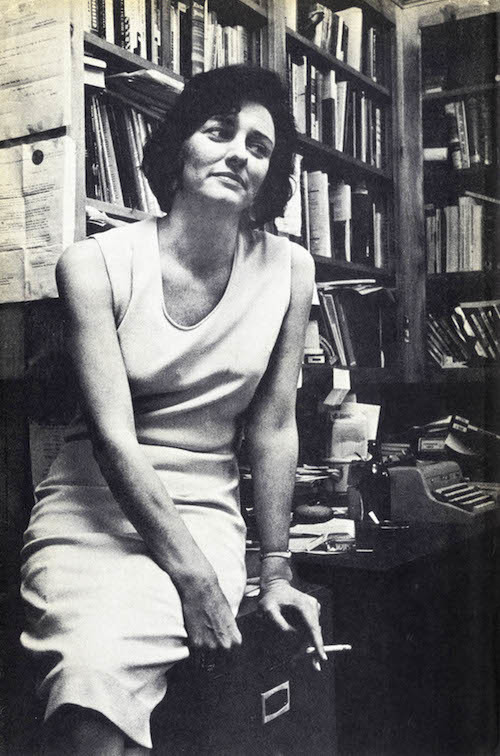Music Swims Back to Me by Anne Sexton - 1959 vs 1974
Anne Sexton performed “Music Swims Back to Me” in 1959 and again in 1974. These two readings of the same work, but they are executed differently. “Music Swims Back to Me” takes on a different meaning in Sexton’s 1974 recitation due to the different stylistic choices she makes while reading the poem. “Music Swims Back to Me” is based off of Sexton’s own personal experiences in a mental institution, so it would be natural for her to have some emotional connection to the poem. In addition, it seems safe to assume that she is the speaker of the poem. The poem is about Sexton remembering her days in the institution whenever she hears the song that they used to play on the radio. Sexton had her first manic episode in 1954, so the recitation in 1959 occurs with memories relatively fresh in her mind compared to the 1974 recitation. Sexton’s 1974 performance of the work reveals how she has matured from her performance in 1959. The pacing of the 1974 performance along with her intonation demonstrate how Sexton has come to terms with the events of her past.
The poem is split into 3 stanzas with 10, 14, and 9 lines each. There is no rhyme scheme and no pattern of syllables either. Sexton chose to write “Music Swims Back to Me” without any of these patterns, because she did not want to detract from the serious nature of the poem. Any rhyming or regular rhythm could make the reader think of childish poems. The 1959 performance lasts 1 minute and 33 seconds while the 1974 performance lasts 1 minute and 48 seconds. This may reflect how Sexton is more comfortable with her past in 1974 than she was in 1959. Reciting the poem no doubt brings back memories of her time in the institution, and if she recites the poem faster, then she has to face those memories for less time. By 1974, Sexton is more accepting of her past, and recites the poem at a slower pace perhaps both because she may be trying to remember the events from 20 years ago to relish them and also because she is not anxious to move on from these memories. Maybe the music remembered more of the experience than Sexton did, maybe because she repressed those memories.
The recording from 1959 is of a higher quality than the recording from 1974. The 1974 recording seems to be from farther away, but intonation can still be discerned. In both performances, Sexton speaks with an informal tone just as the text of the poem suggests. By using singing lines like “La la la” the reader feels as if Sexton is personally communicating to them, and this feeling is reinforced when Sexton casually sings “La la la” in both performances. The informal, conversational tone of the poem is supported by the beginning of the second stanza, where she addresses the listener or reader directly with the imperative sentence “Imagine it.” A direct address to the listener helps bridge the gap between performer and audience.
Sexton repeatedly refers to the night she first came. This repetition in every stanza suggests that Sexton may be clinging onto the memory of her not being afraid since it was an anchor point for her during her time in the asylum. That night was a transition between her life in the outside world and life inside the institution. The final reference to “the night [she] came” she asserts that she “was not afraid”. This assertion makes the listener assume that Sexton was afraid all of the other nights that she spent in the asylum. The listener can notice that the assertion in the 1974 version is more proud than the assertion in the 1959 version. By 1974, Sexton has hazier memories of the nights that she was afraid, so she can declare her lack of fear more boldly.
One notable difference between the two performances is the delivery of the ending of the poem. In the 1959 performance, the pause between “afraid” and “Mister?” is significantly shorter than in the 1974 performance. “Mister?” seems like a cry for help from the speaker. The longer pause in the 1974 performance could represent that Sexton understands that her pleas went unheard and her attempts were futile. This rationale could also explain why the delivery of “Mister?” in the 1959 performance seems more genuine and desperate. There is a greater emphasis on the word “strangled” in the 1974 performance than there is in the 1959 performance. This artistic choice suggests that Sexton was thinking more about death in 1974, perhaps foreshadowing her own suicide in the same year.
The different performances give us two windows into Anne Sexton’s life: one during her 1959 performance and the other during her 1974 performance. The duration and location of pauses along with the emphasis that she decides to place on certain words show us that Sexton had reconciled her experiences in the asylum by 1974, while it seemed like the feelings were still more potent in 1959.
